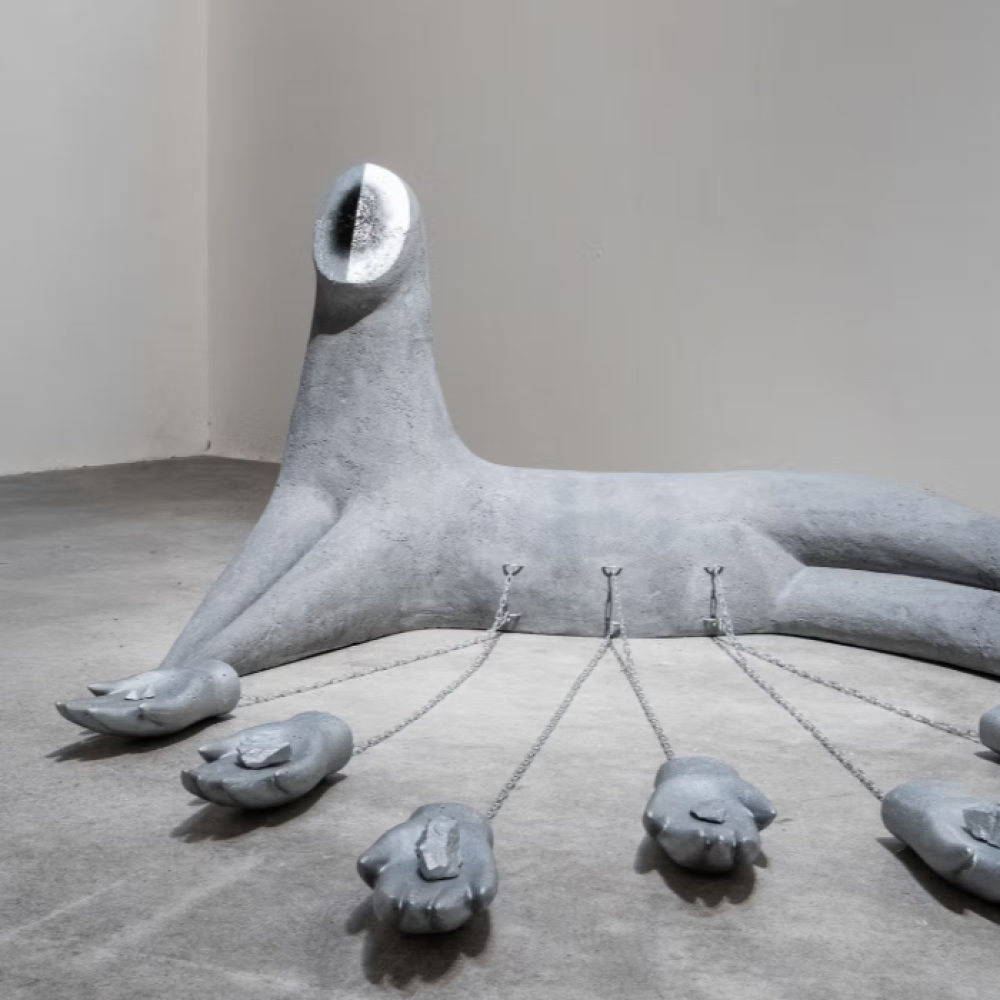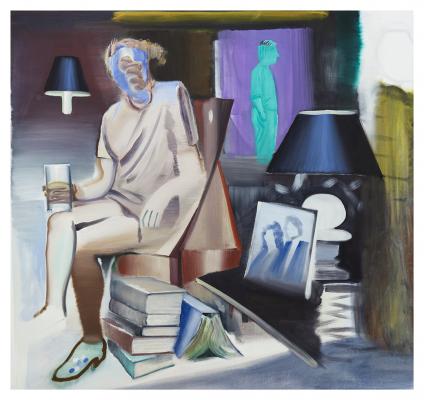
Gábor Pintér (*1983) studied painting at the Hungarian Academy of Fine Arts and lives and works in Budapest. His work includes not only painting, but also work with paper and spatial installations. His paintings are often a response to his own critical reflections on today's consumer society. In addition, he reflects on the workings of the mind and the process of cognition. Gábor has occupied the studio at the Telegraph since the beginning of September. Before he left, he managed to answer a few questions for us.
Could you describe your approach to making art?
It's never easy to simply sum it up. But what I am primarily interested in is seeing, perception as such, and how consciousness enters into it.
You work with visual puzzles or puns in your paintings. Plurality also appears in your chosen formal practices, where you combine abstraction, modernist stylization, but also realism. How do you arrive at these motifs?
Yes, I like different visual situations and meta images. I have a huge collection of different photographs in my laptop and I draw a lot. And of course I have a head full of images. Altered or distorted memories. As I collect them, I think about the images, the compositions and pairings of these different motifs, how they can relate to each other, how they both shape and reshape different meanings. But the process of painting is fluid and not entirely predictable - things you didn't expect can suddenly change. I'm primarily playing. Sometimes I just create opposites. I focus only on the composition and the interpretation is a matter for the viewer. If I paint a photorealistic close-up of a person, a smaller scene as a geometric abstract composition, and one other in the background, where there is perhaps a comic figure, I am saying to the observer "go out on the street and look around". You'll find strange clothes, interesting faces, situations and momentary coincidences. I like simple, banal themes because reality is filled with them.
You used to be an active graffiti writer and even studied porcelain painting. Does this somehow appear in your current work? Do these technical approaches translate into the way you think about painting now?
If you think about it, there's quite a strong duality there. I'm actually dealing with both at the same time. In fact, a similar duality characterizes my paintings. They are also two genres of painting that work a lot with movement. I'm very interested in the process of painting - I like to plan my brushstrokes.
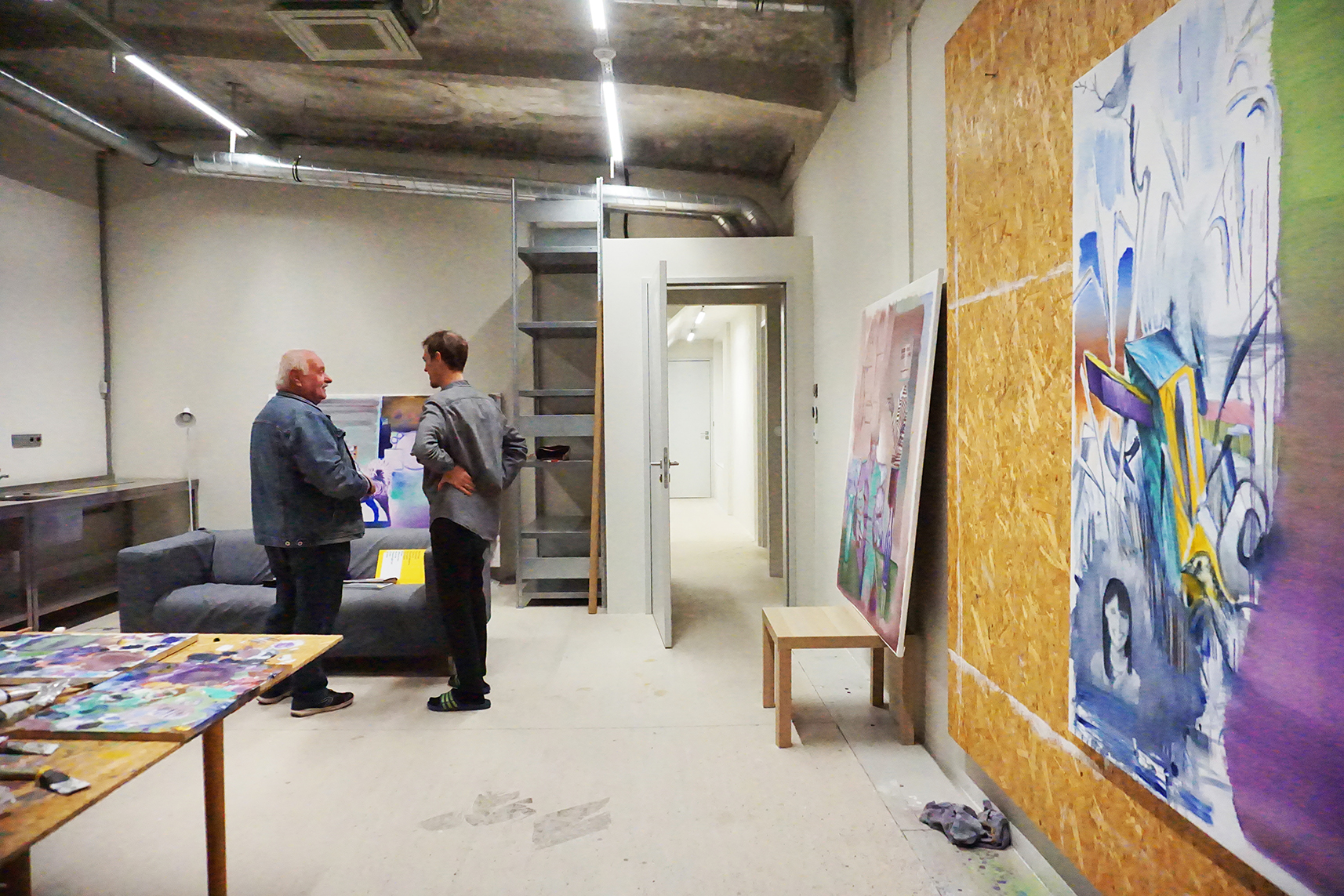
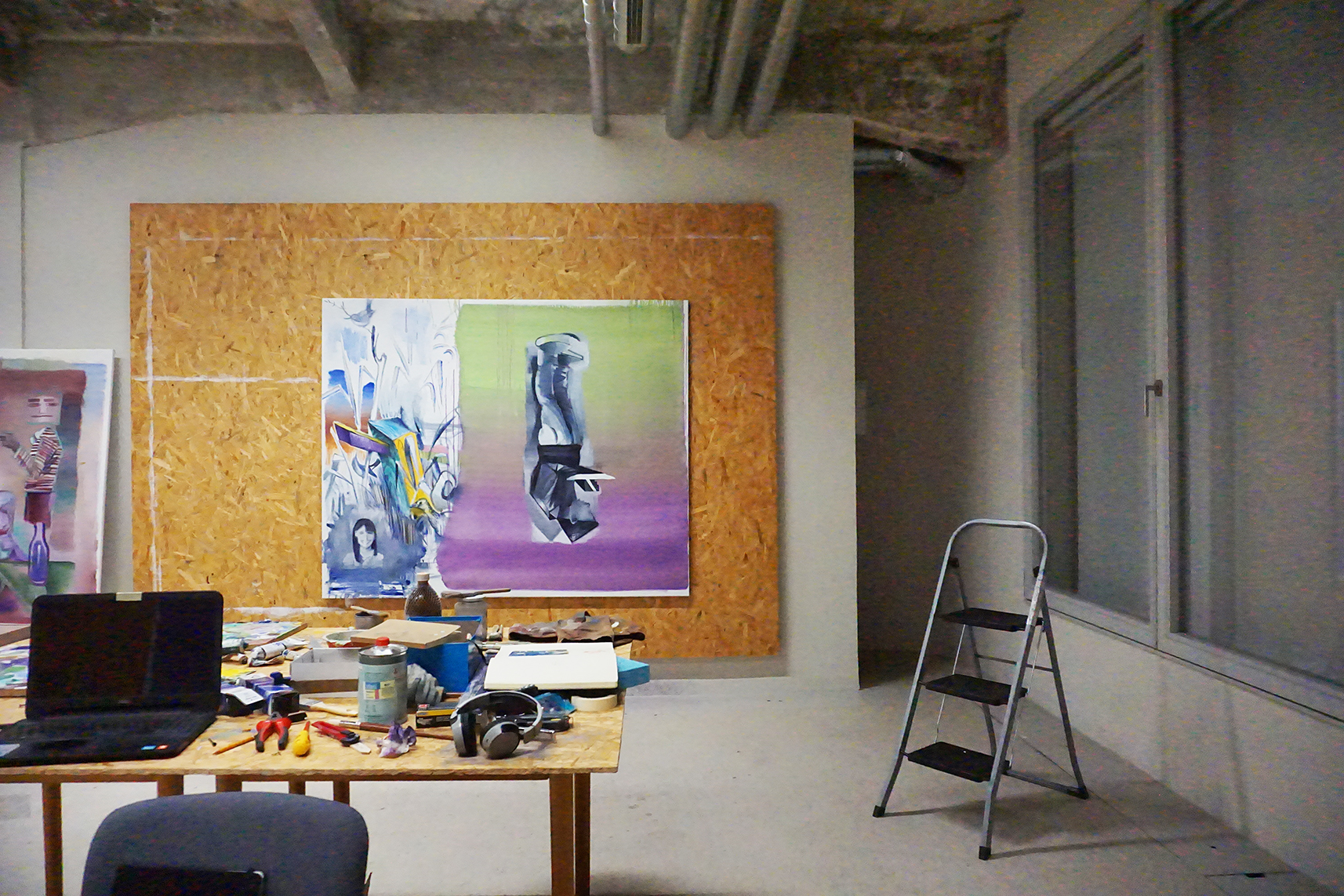
You just had a solo exhibition at the Erika Deák Gallery in Budapest ("Flies always tries to escape through the closed part of the window after great ideas"). Could you describe how it was created?
In the summer I always had half of the window open in my studio and flies were regularly flying in. They kept landing on me. I probably attracted them somehow. They're very annoying when you're just sitting there thinking. But when they want to fly away, they always try the closed part of the window first. As I saw, it's not easy for them. There's a crucial detail in the title, that there's an open part of the window as an option. And after thinking about it for a while, I found the "after great ideas" sequence pretty funny. Because sometimes the same thing happens to me.
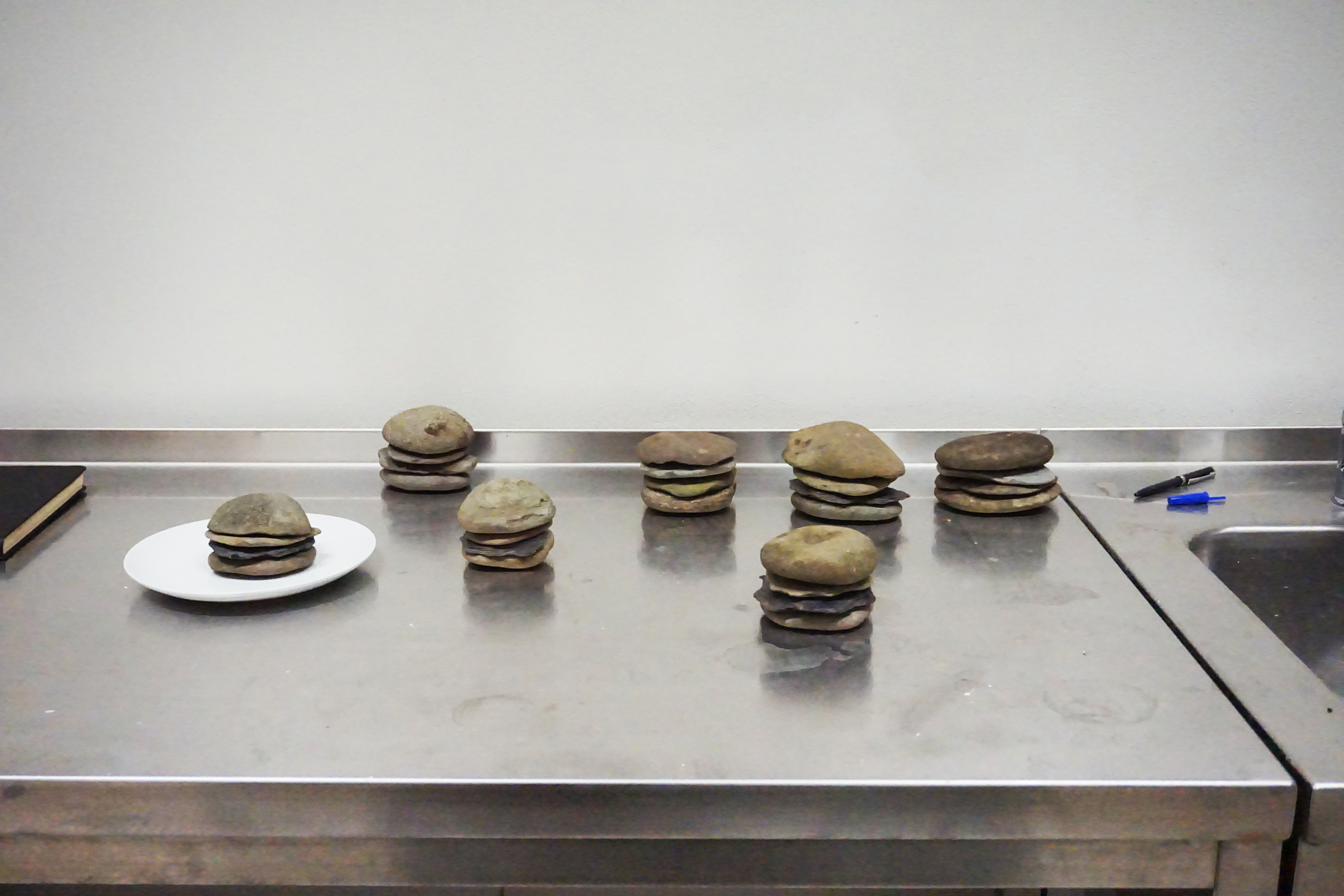
How was your experience of living in Olomouc?
I was thrilled with my stay here. I created a special series of sculptures inspired by my walks along the Bystřice River. When I was looking at the river bank full of pebbles, I got an idea. I was trying to collect rocks that I could use to make hamburger sculptures. It was exciting. I already have a few.
Did the solitude of the residency affect the way you work in any way?
When I work, I am never alone.
By Šárka Nováková, Telegraph Gallery
